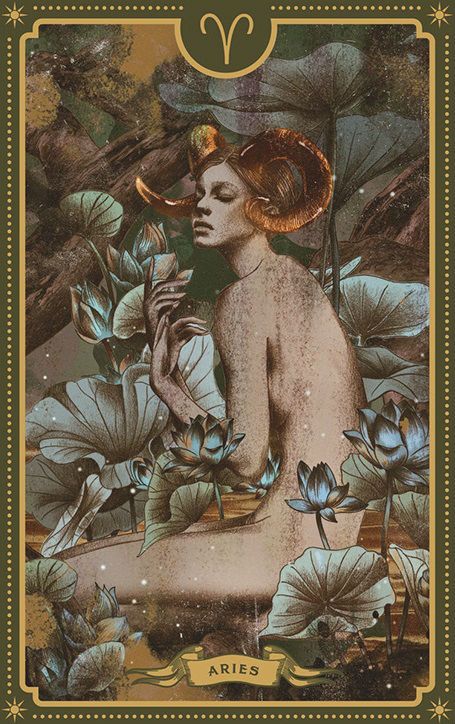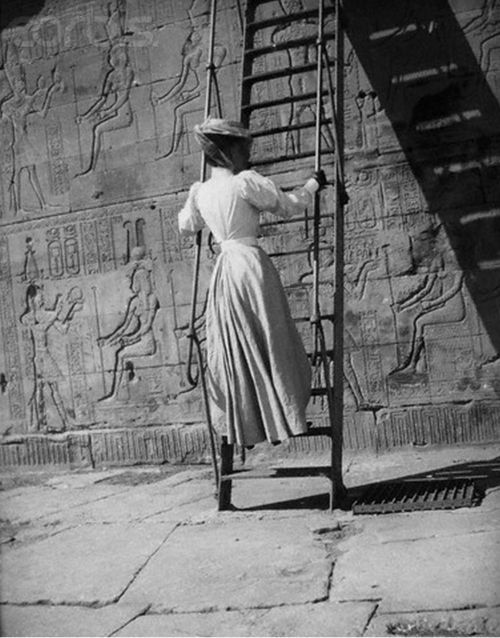 The Nodes, known as the North Node (also called the ascending node) and the South Node (or descending node), play a pivotal role in the spiritual journey of an individual, and their vulnerability during eclipses only adds to the enigmatic nature that surrounds them. The Moon’s Nodes derive their importance from the intersection of the Moon’s orbital path with the ecliptic plane, which is the apparent path the Sun takes across the sky throughout the year. This intersection point gives rise to the Nodes, and it is this unique origin that imbues them with distinct symbolism in the realm of astrology. The Nodes’ interpretation is shrouded in mystery precisely because of their intangibility. Unlike the planets that can be seen with the naked eye or through telescopes, the Nodes remain invisible to the human eye, further enhancing the mystical aura that surrounds their significance. Astrologers, however, do not shy away from exploring these hidden cosmic forces, striving to decipher their impact on an individual’s life journey.
The Nodes, known as the North Node (also called the ascending node) and the South Node (or descending node), play a pivotal role in the spiritual journey of an individual, and their vulnerability during eclipses only adds to the enigmatic nature that surrounds them. The Moon’s Nodes derive their importance from the intersection of the Moon’s orbital path with the ecliptic plane, which is the apparent path the Sun takes across the sky throughout the year. This intersection point gives rise to the Nodes, and it is this unique origin that imbues them with distinct symbolism in the realm of astrology. The Nodes’ interpretation is shrouded in mystery precisely because of their intangibility. Unlike the planets that can be seen with the naked eye or through telescopes, the Nodes remain invisible to the human eye, further enhancing the mystical aura that surrounds their significance. Astrologers, however, do not shy away from exploring these hidden cosmic forces, striving to decipher their impact on an individual’s life journey.
In astrological thought, the Nodes are believed to represent karmic lessons and pivotal moments that can profoundly shape one’s spiritual evolution. The North Node, often associated with growth and the path to fulfillment, signifies the direction an individual should strive toward in this lifetime. It points to areas of personal development and growth that may be unfamiliar or challenging but are essential for the soul’s progress. The South Node, on the other hand, represents familiar patterns and tendencies from past lives, often serving as a comfort zone but also potentially hindering spiritual growth if overemphasized.
The Nodes’ connection to eclipses adds an extra layer of complexity to their interpretation. During a solar or lunar eclipse, the Sun, Moon, and Earth align in a way that intensifies the influence of the Nodes. Eclipses are considered powerful cosmic events that can bring about significant shifts, both on a personal and global scale. The Nodes, being intimately tied to these celestial phenomena, are believed to magnify their impact on an individual’s life and spiritual journey. In essence, the Moon’s Nodes, despite their hidden nature and lack of physical presence, hold a important place in astrology as symbolic indicators of karmic growth and evolution.
In the realm of Vedic astrology, the Nodes, namely Rahu and Ketu, hold a profound and enigmatic significance. Their celestial dance with the luminaries, particularly during eclipses, bestows upon them a shadowy reputation, often viewed as malefic forces. This association with eclipses, where they align with the Sun and the Moon, accentuates their impact on both the individual and collective destiny. Eclipses, in the eyes of Vedic astrologers, are not mere astronomical phenomena but potent portals of change and transformation, and the Nodes are seen as the gatekeepers of these cosmic doorways.
During these pivotal moments of celestial alignment, the Nodes are believed to exert a particularly strong influence on one’s life path. As a result, Vedic astrologers caution against underestimating the potential challenges posed by the Nodes during eclipse periods. Instead, they advise individuals to engage in careful consideration and deep introspection, recognizing that these times can be both vulnerable and influential in shaping the course of one’s life. Throughout history, the Nodes have maintained an air of mysticism within astrological practices. Their importance extends beyond mere astronomical symbolism; it delves into the profound belief that each person is on a predetermined karmic journey. This journey is intricately interwoven with the Nodes, implying that one’s past actions and unresolved lessons must be integrated and confronted in the present life.
The nodal axis in astrology acts as a symbolic bridge between an individual’s past and future, between karma and destiny. It consists of two distinct points: the North Node (NN) and the South Node (SN), each carrying its own unique interpretations within the framework of a birth chart. This axis is often referred to as the “line of fate” because it is believed to reveal essential information about an individual’s karmic path and life’s course. The South Node, situated opposite the North Node, plays the role of a repository for accumulated knowledge and experiences from past lives or earlier in the current life. It acts as a reservoir of wisdom and ingrained tendencies, representing the familiar, comfortable patterns and behaviors that a person has developed over time. In essence, the South Node reflects the qualities and lessons that have already been mastered in previous lifetimes or experiences. It gives us a clear understanding of an individual’s strengths and challenges in their current life, shaped by their past experiences and lessons.
Conversely, the North Node points towards the future and the developmental path an individual is encouraged to pursue in this lifetime. It symbolizes uncharted territory, new experiences, and challenges that await a person for the sake of their spiritual growth and evolution. The North Node beckons individuals to embrace these unfamiliar qualities and lessons, urging them to step out of their comfort zone and venture into the unknown. It signifies the qualities that an individual needs to develop and integrate to progress along their evolutionary journey. In essence, the nodal axis serves as a guiding compass within the birth chart, highlighting the duality of human existence. The South Node reminds us of our past, the strengths we’ve honed, and the tendencies we may lean on, while the North Node beckons us towards the future, urging us to stretch beyond our comfort zone and embrace new challenges for personal and spiritual growth. This axis offers profound insights into the delicate balance between what we’ve been and what we are meant to become, helping individuals bridge the gap between their past and their destiny.
The nodal axis in astrology delves deep into the profound idea of interconnectedness and the continuity of our experiences across lifetimes. It embodies the mystical idea that life isn’t a collection of separate events, but instead, it’s woven together by the threads of past experiences and future potential. The nodal axis suggests that each person’s current life is just one segment of an ongoing cycle of growth and learning, with roots stretching back into the past and reaching forward into the future. Astrologers closely examine the position of the nodal axis in a birth chart to gain valuable insights into an individual’s likely evolutionary path. The signs and houses where the North and South Nodes reside provide hints about old patterns from past experiences and new paths waiting to be explored. This information offers guidance on blending the wisdom acquired from the past with the challenges and opportunities of the present and future. Furthermore, when transiting planets align closely with the nodal axis, astrologers often believe that the events or individuals entering one’s life during these periods carry a sense of destiny or inevitability. These moments might feel fated, prompting individuals to encounter people, circumstances, or opportunities that play a crucial role in their life journey.
The Astrology of the Nodes – Nodal Axis
From a psychological standpoint, the interpretation of the South Node in astrology delves into the fascinating realm of the subconscious mind and the deeply ingrained patterns that stem from it. In this context, the South Node represents a reservoir of habits, tendencies, and routines that have been carried over from past experiences, whether they manifest in the current life or were rooted in previous incarnations. It symbolizes what an individual brings into their present existence as a foundational aspect of their personality. The South Node can be likened to a psychological comfort zone, a repository of behaviors and characteristics that feel familiar and well-practiced. These traits may have served the individual well in earlier life stages or under different circumstances. They are like the “default settings” of a person’s psyche – automatic responses, coping mechanisms, and learned behaviors that have become second nature over time. However, while the South Node represents a reservoir of knowledge and skills, it can also carry limitations and repetitions. These are the aspects of one’s personality that, if not consciously addressed and evolved, can become stumbling blocks to personal growth and self-realization.
In the journey of self-discovery and personal development, understanding the influence of the South Node is crucial. By recognizing the automatic responses and patterns associated with it, individuals can consciously choose whether to continue along that well-worn path or to venture into new territory represented by the North Node. The South Node’s lessons lie in acknowledging its strengths and weaknesses and using this self-awareness as a springboard for growth and evolution.
The North Node signifies uncharted territory within the psyche, highlighting aspects of one’s personality and experiences that are ready for further development and evolution. This nodal point acts as a catalyst for psychological transformation, encouraging individuals to step out of their comfort zones, embrace challenges, and cultivate qualities that may initially feel unfamiliar but hold immense potential for personal growth. Psychologically, the dynamic between the South Node and the North Node can be understood as a tension between the past and the future. The South Node’s influence reflects the gravitational pull of the past, coaxing the individual to rely on what is familiar and firmly established in their psyche. It represents the comfort zone, a realm of automatic responses, well-practiced behaviors, and deeply ingrained patterns. In contrast, the North Node’s influence exerts a forward-reaching force, compelling the individual to explore new dimensions of their personality and life experiences. It urges them to venture into areas that may initially evoke discomfort or uncertainty. The North Node signifies the path of personal evolution, one that involves stretching beyond the boundaries of the known into the realm of the unknown.
From a psychological perspective, personal development hinges on a conscious engagement with both nodes. It commences with introspection and self-awareness, wherein individuals reflect on the qualities and patterns associated with their South Node. This introspection involves recognizing their strengths and acknowledging the limitations inherent in their default responses and behaviors. It is the first crucial step in liberating oneself from automatic reactions. The North Node, with its contrasting influence, presents an aspirational path forward. It beckons individuals to deliberately work on the qualities and characteristics it embodies. This may entail stepping into new roles, confronting fears, or developing traits that are less familiar but essential for personal growth. The process demands deliberate effort, persistence, and a willingness to step outside of one’s comfort zone. The North Node is often likened to a point of illumination, a place where individuals are encouraged to “turn on the light” of their awareness. This perspective suggests that by paying attention to and actively engaging in the activities and qualities represented by the North Node, individuals can elevate their consciousness and expand their understanding of themselves and the world around them.
The integration of these two Nodes is key to personal development. Rather than viewing them as opposing forces, they form a complementary axis that provides a holistic view of an individual’s potential. The South Node contributes the wisdom and skills acquired through experience, while the North Node points toward untapped areas of growth and exploration. As life unfolds along a timeline, cycles and patterns emerge. These cycles can offer additional perspectives from which to examine the Nodes. By observing how these energies manifest in different phases of life, individuals can gain insights into the overarching themes and lessons that unfold over time.
The year prior to each of these four nodal returns (19, 38, 57, and 76) is a sort of 12th House phase of the nodal cycle – a time in which one should attempt to sum up the meaning and activity of that entire cycle and prepare for the next. The age of 18 for example, is a time to sum up the experiences of one’s youth so that an individual may develop an objective foundation for the new departure into adulthood at 19…At the second nodal cycle at age 37-38, one should try to assess the degree of success (or failure) in his attempts to realize his ideal life-purpose through concrete activities…When the third nodal cycle ends at age 56-57, each person should assess the degree of personality fulfilment he has achieved, and the measure to which his creative work as a social individual has been successful…and a time of change in spiritual direction…The fourth nodal return occurs at age 75-76. At that time there should be an assessment of the personality’s spiritual realizations, and of the success of one’s efforts to conclude his life in a significant manner, leaving a seed to nourish future generations. Cycles of Becoming: The Planetary Pattern of Growth














